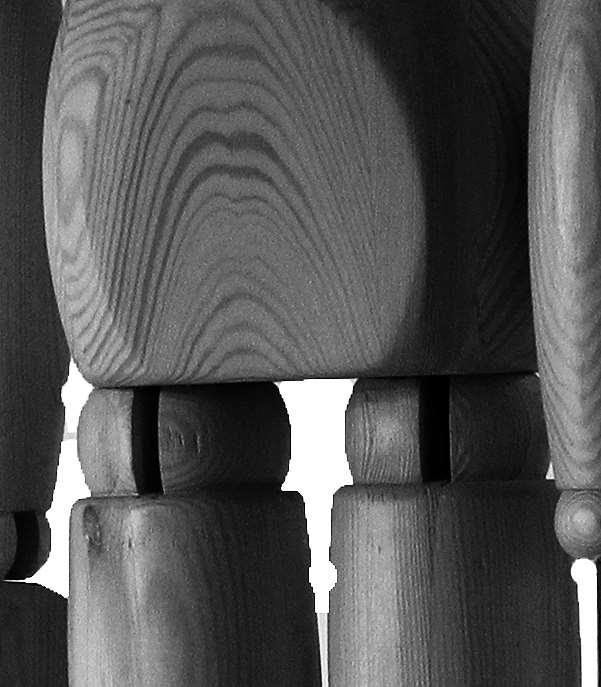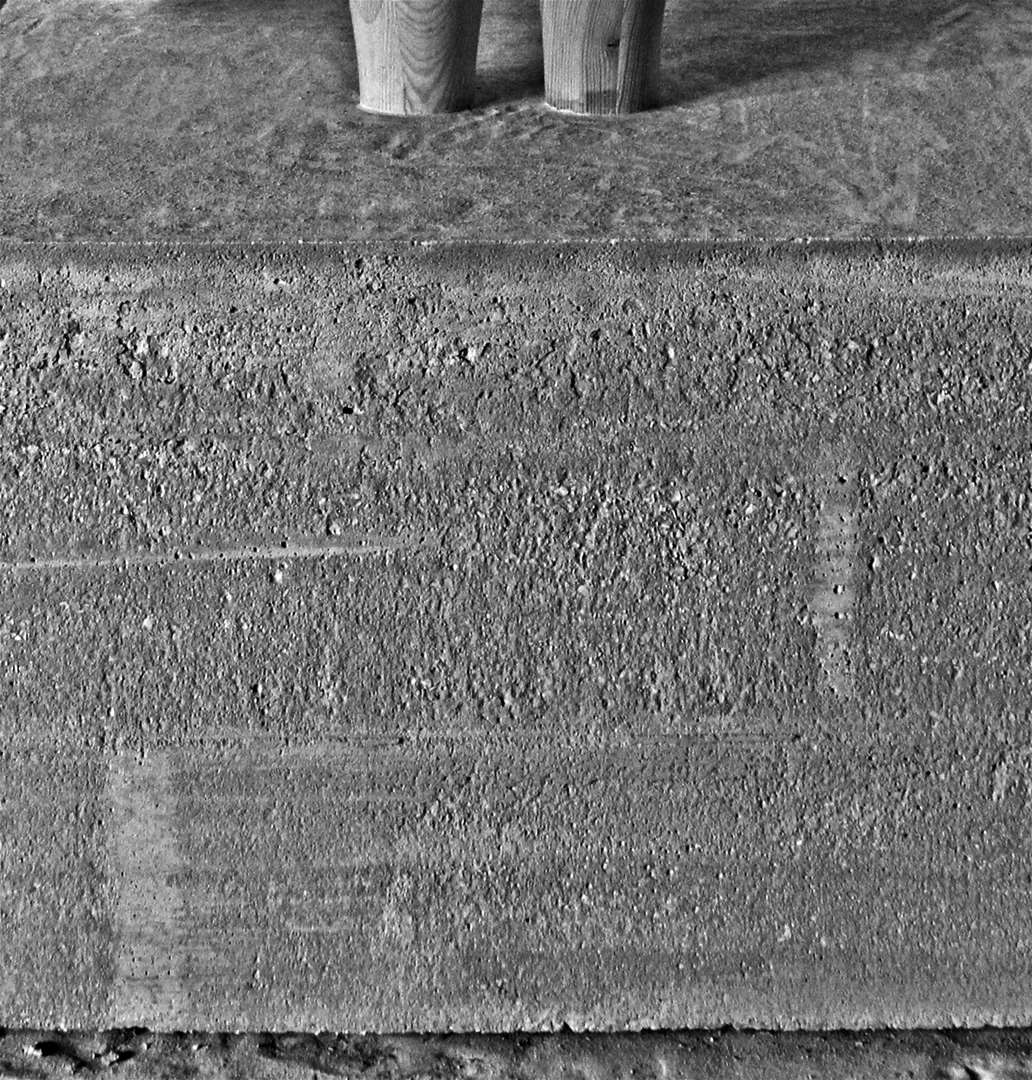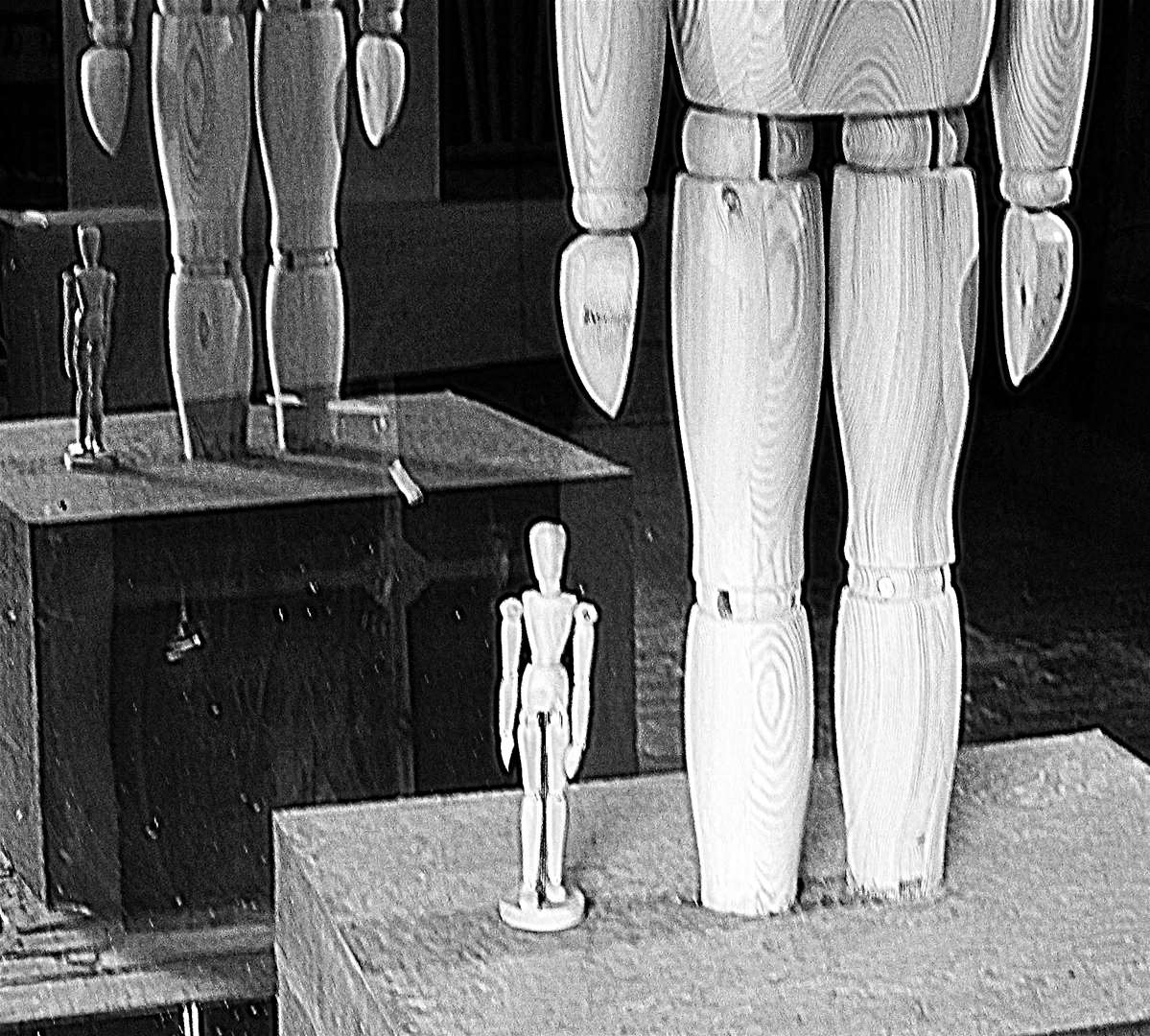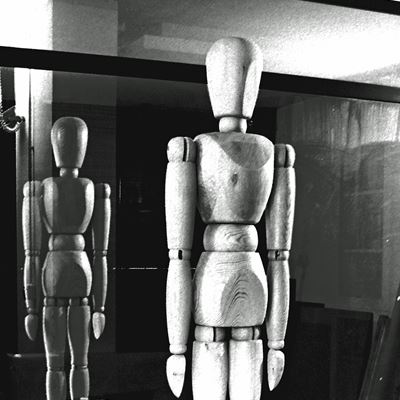The Dummy
The Dummy
THE DUMMY
By ISSAM BARHOUCH & ZENA ASSI
Year 2014
The Dummy, since the medieval time, is the name given to the classical wooden mannequin used by artists throughout the history of art. This piece, a reproduction of the puppet, within its enlarged scale and its fixation into a concrete cube, denotes the question of the definition of contemporary art itself and its relation with different variables that come into play and define its value. The work is an attempt to portray the controversy behind any art definition and classification. What is an artwork nowadays? And can it be defined without the artist himself, his story, his background, his ‘parcours d’artiste’? Can an art piece find its place and value without the marketing behind it, the gallery that supports it, the chain of collectors, the course of the economy, the route of the art movement, or even the religious, political or social background that justifies it production… to name a few? In the end, can an artwork of today survive within the scale of the artist, its creator? Or did it surpass its common visual language and become a sort of sublimation into a much larger context than art itself?
Dimensions: 70x212x80cm
Media: Wood, concrete, iron, wheels
By ISSAM BARHOUCH & ZENA ASSI
Year 2014
The Dummy, since the medieval time, is the name given to the classical wooden mannequin used by artists throughout the history of art. This piece, a reproduction of the puppet, within its enlarged scale and its fixation into a concrete cube, denotes the question of the definition of contemporary art itself and its relation with different variables that come into play and define its value. The work is an attempt to portray the controversy behind any art definition and classification. What is an artwork nowadays? And can it be defined without the artist himself, his story, his background, his ‘parcours d’artiste’? Can an art piece find its place and value without the marketing behind it, the gallery that supports it, the chain of collectors, the course of the economy, the route of the art movement, or even the religious, political or social background that justifies it production… to name a few? In the end, can an artwork of today survive within the scale of the artist, its creator? Or did it surpass its common visual language and become a sort of sublimation into a much larger context than art itself?
Dimensions: 70x212x80cm
Media: Wood, concrete, iron, wheels







